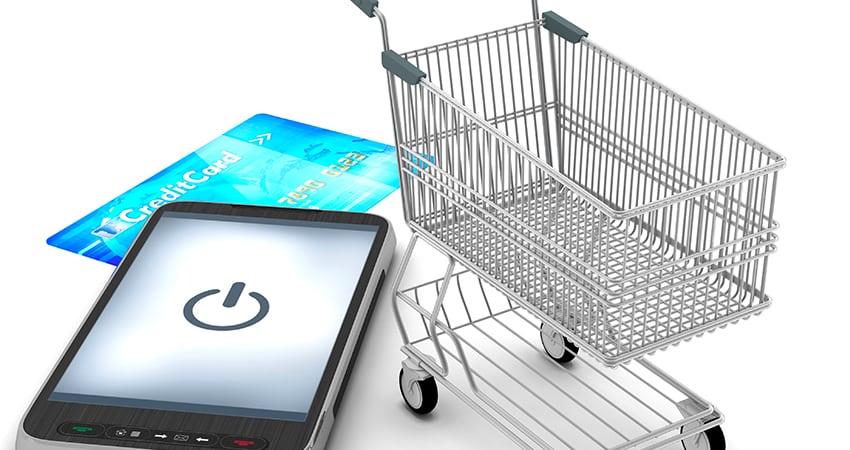A colleague recently told me over lunch how much he loves pizza apps. “They’re just so easy.” When I asked him what was so easy, he said that while picking from the menu is part of the ease, the bigger part has to do with paying. It’s one touch.
Now before you run out and hire a team to create an app for your brand, let’s think about how to make paying easier – whether someone visits your website from a desktop or wants to take advantage of email offers directly from their mobile device.
We talk a lot about omnichannel and the customer experience – making sure the cart is available, regardless of device, and providing a seamless shopping experience. But simply making shopping easy is just step one. Making it easier to pay is the key to conversion.
Mobile Shopping Is Here to Stay
According to eMarketer, 58% of mobile sales came from smartphones in 2016, and that number is expected to grow. Overall, mobile made up 29% of all ecommerce sales. But by 2021, it’s predicted that mobile will make up greater than half of all ecommerce sales.
Retailers need to consider what this means for their sales. When consumers are looking to purchase on their devices, they expect a frictionless experience. And what provides more friction than being asked to enter an endless stream of billing and shipping details, often moving manually from box to box, all while on a small mobile screen?
Another colleague tells me she frequently abandons items at checkout when trying to buy on her mobile device. “Those forms are better than a strict budget for keeping my spending in check.’’ She recently recounted how she suffered through one form on a national retailer’s site solely because her too-busy-to-shop teenage daughter actually liked one of the dresses she had selected and she couldn’t bear to abandon the shopping trip after thumbing through 120 sleeveless mini-dresses. She completed her purchase out of necessity, not convenience. If she could have found that baby blue skater dress on Amazon, she might have been tempted to bail altogether.
If your competitor offers a frictionless purchase experience and you do not, you may not only lose a sale now, but customers may remember this and bypass you altogether the next time they shop.
Security Plays a Key Role In Mobile Payment Behavior
The counter-argument is that most retailers allow users to save their credit card information on their site to make future checkouts easier. However, online security issues have minimized usage of this tool. In fact, due to hacking concerns, 33% of consumers never save their credit card information, and 30% only use trusted payment methods, such as PayPal.
The result? More and more consumers are storing their payment information in their phones. There are one million ApplePay accounts being activated weekly worldwide. As consumers continue to adopt mobile payment on their primary connected device, creating an easy way to allow consumers to checkout will be an essential requirement in the very near future.
An intriguing facet to mobile payments is that Amazon’s U.S. patent for one-click payment technology expires this year, leaving the door open for other retailers to implement their own one-click solutions without licensing the technology from Amazon. Google is reportedly working on a one-click payment system that integrates with the Chrome browser.
This integration with Chrome goes beyond just mobile, and that itself is telling of the power that mobile payment options hold. The purchase process between an app, laptop and a mobile version of a site are almost always different from one another, but the goal is symmetry. As mobile purchasing becomes the standard, non-mobile devices will be forced to match that experience. Storing payment info in Chrome will allow users to easily check out regardless of the device they are on. Creating a symmetrical experience not only allows for a quicker checkout (which should decrease abandonment), but also improves the customer’s overall experience with your brand.
The time is right for retailers to provide a more simplified, convenient checkout experience. Don’t think of it as simply a way to optimize for mobile. It’s not. Mobile is the norm. Think of it in terms of giving your customers what they want. Long checkout forms on mobile devices are a thing of the past. Don’t believe it? Ask 100 people if they’d rather fill out a long form on their phone or make their next mobile purchase with the simple touch of a thumb.
Greg Zakowicz is Senior Commerce Marketing Analyst for Bronto Software

